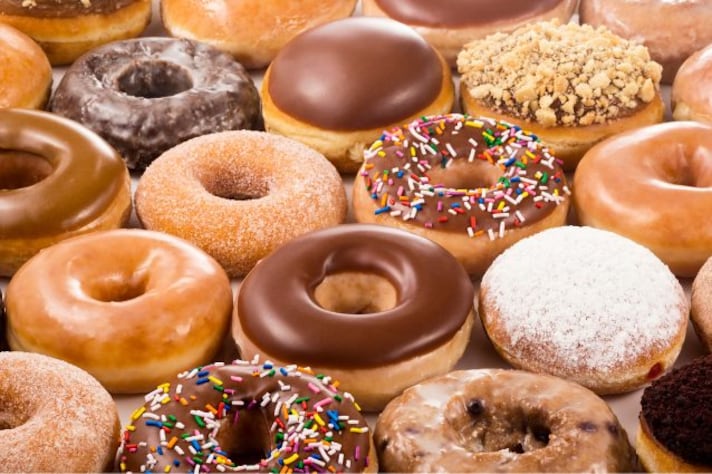Have You Ever Wondered Why Donuts Have Holes? Here’s The Reason(s)
Donuts, a beloved American treat with over 10 billion consumed yearly, are iconic for their center hole, which ensures even cooking. Legends credit its creation to a 19th-century ship captain or Dutch settlers. Adolph Levitt's invention of the automated donut machine in the early 20th century popularized donuts.

Donuts are a quintessential American treat, loved for their sweet, indulgent taste and versatile flavors. In the United States, donuts have become more than just a breakfast item—they are a cultural phenomenon. Americans consume over 10 billion donuts annually, with daily consumption averaging around 30 million. From glazed to jelly-filled, the variety of donuts is vast. Yet, when we think of donuts, the image that comes to mind is often the classic ring-shaped donut with a hole in the center. Have you ever wondered why donuts have a hole? Let’s find out.
Why Does the Donut Hole Exist?
There are a couple of popular legends that attempt to explain the origin of the donut hole. One story attributes the invention to a New England ship captain named Hanson Gregory in the mid-19th century. Frustrated with the raw centers of his mother's fried dough, Gregory is said to have punched a hole in the middle, ensuring even cooking. Another tale suggests that Dutch settlers created the hole to thread the donuts on a wooden dowel for convenience. While the true origin remains unclear, the purpose of the hole is evident: it allows for a more even cooking process, preventing undercooked centers and ensuring that each bite is perfectly crisp and delicious.

How Donut Holes Are Made
So, how are these iconic holes made? In traditional donut-making, dough is rolled out and then cut into rings using a round cutter with a smaller cutter for the center hole. This manual process ensures uniformity and even cooking. In commercial production, specialized machines are used to cut the donuts, automatically creating the holes with precision. These machines streamline the process, making it easier to produce large quantities of perfectly shaped donuts consistently.
Who Invented the Donut Making Machines?
The invention of the donut machine revolutionized the way donuts were made and is credited to Adolph Levitt, a Russian-born immigrant. In the early 20th century, Levitt invented the first automated donut-making machine, which he showcased at the 1934 World's Fair in Chicago. His invention not only sped up production but also standardized the quality and shape of donuts. Levitt's machine played a significant role in popularizing donuts across America, making them more accessible to the masses.

Now… Did You Know People Enjoy Donut Holes as a Treat?
Interestingly, the small, round treats known as "donut holes" are not typically made from the cut-out centers of traditional donuts. Instead, they are formed from a separate batch of dough, specifically designed to be small and round. These bite-sized delights have become a popular treat in their own right, often glazed or dusted with powdered sugar, and are enjoyed as a complementary snack to their larger counterparts.
;Resize,width=767;)

;Resize,width=712;)

